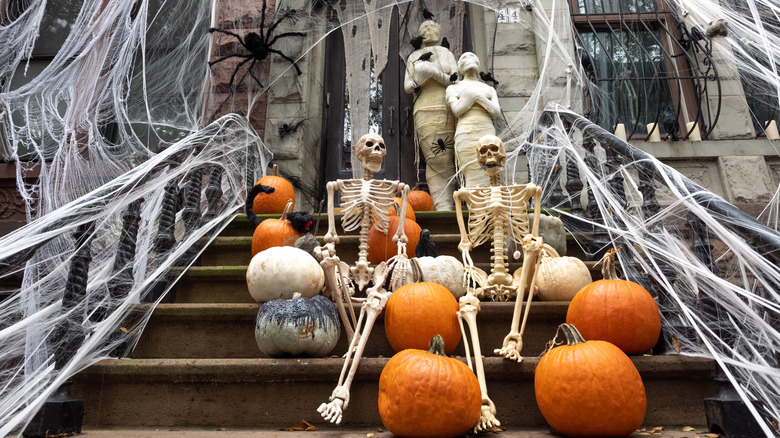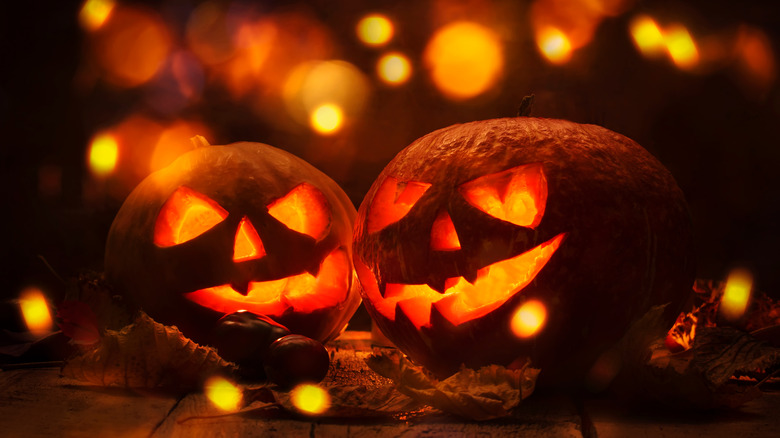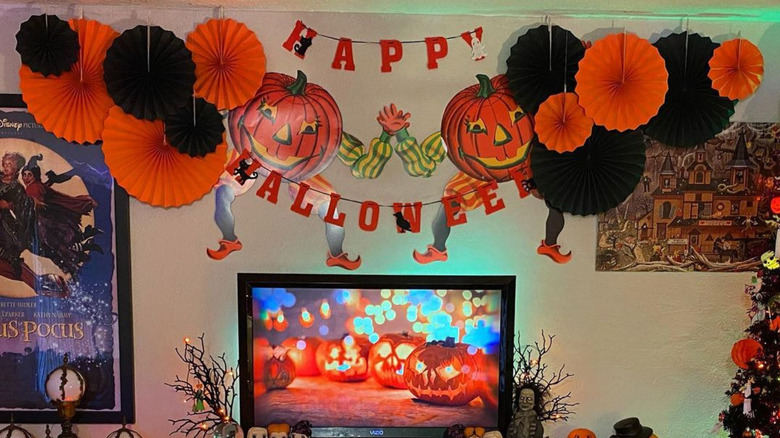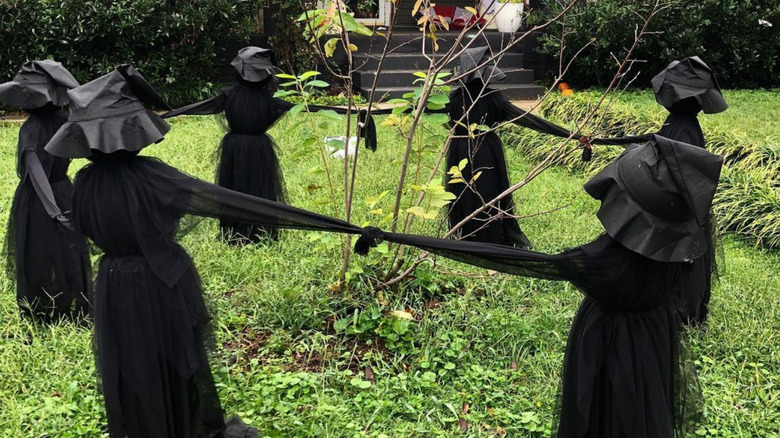The Surprising Origin Of Common Halloween Decorations
A common way to celebrate Halloween is through decorating. In fact, the amount spent on this spooky holiday is estimated to reach an all-time high of $10.14 billion this year, with $3.17 billion of that focused on decorations alone (via National Retail Federation).
From cute and colorful ghosts and ghouls to homes that are transformed into haunted houses, there are countless decor options out there. But what's the history of it all, and how did these common embellishments come to be?
Halloween's history can be traced back to the Celtic festival Samhain, which celebrated the end of the summer harvest (October 31) and the beginning of winter and the new year (November 1). It was thought that the barrier between the physical and spiritual world was blurred on this night, so people lit fires, dressed up, and carved faces into turnips in order to keep away the spirits (via History).
Jack-o-lanterns were thought to either ward off or help guide spirits
The tradition of carving a vegetable and placing a candle in it should sound familiar, as these went on to become jack-o-lanterns! When Halloween reached the United States, it was realized that a pumpkin would be a better choice than turnips (via Apartment Therapy).
According to Celtic folklore, there was also a farmer named Jack who tricked the devil, which led to him ending up in purgatory. Therefore, he made a turnip lantern in order to help guide his lost soul. When we make jack-o-lanterns today, we may be helping to guide lost spirits, too (via Live Science).
The common colors of this holiday date back to Samhain, as well. Orange is associated with the end of the harvest and the fires that were lit up on October 31, while black is synonymous with night and the darkness of winter, which started on November 1 (via House Beautiful).
Creatures like devils, witches, and ghosts were used in paper party decorations
According to Apartment Therapy, some of Samhain's traditions were adopted by the Catholics for All Saints' Day and All Hallows' Eve, then brought to the U.S. by immigrants in the mid-1800s. By the early 1900s, the holiday was an adult-focused one, so the Dennison Paper Company put out Dennison's Bogie Book each year between 1912 to 1934. It had ideas for Halloween parties and decorations, many of which were made of paper. The Beistle Company began creating festive products like this, too. These would usually get tossed out afterward, making any existing ones today quite rare and valuable, per Apartment Therapy.
Mark B. Ledenbach, who collects vintage Halloween decor and wrote a guide called "Vintage Halloween Collectibles," told Gizmodo, "By and large, Halloween as a holiday, where adults would have parties for their friends and would decorate their homes, that didn't start in the United States until about 1910. Trick-or-treating ... That really didn't happen until the mid-1930s. Once Halloween began to be [geared] more toward kids ... the devils and witches and ghosts became very friendly and innocuous, not so much inspiring chills; instead, it was cutesy."
The creatures seen in those paper party decorations and costumes are the ones that are still popular today!
There are even some Samhain traditions centered around witches and ghosts
The witch, the black cat, and the ghost are all very common and sought-after symbols when it comes to decorating for Halloween, and there are many tales associated with each of them.
During the Dark Ages, if a woman accused of witchcraft had a cat, the pet was thought to be her familiar — an animal from the devil. There was also a legend that the devil transformed into a cat when communicating with witches. During Samhain, though, the figure with a pointy hat and a cauldron was known as the crone, the old one, or the Earth mother, and she was actually celebrated for symbolizing wisdom and the changing of the seasons (via Live Science).
It was also thought that ghosts could appear as humans during Samhain in order to ask for money or food, and turning them away could lead to a person being cursed or haunted. Another idea was that if a person dressed up as a ghost, they could trick spirits into not taking their soul, per Live Science. Many may wear costumes for different reasons now and ask for candy instead, but it's clear to see how some of these traditions and decorations got their start!



